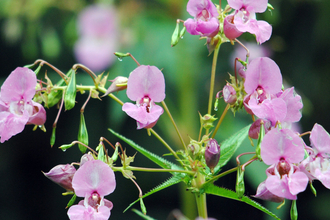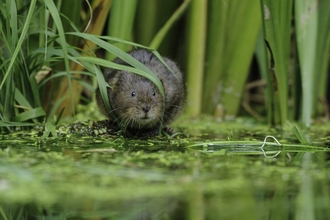
(c) Tom Hibbert
Shropshire Invasive Non-Native Species Initiative (SINNSI)
What are invasive non-native species?
Invasive non-native species (INNS) are species that have been introduced to areas outside of their natural geographic range. This introduction is often by humans, both intentionally (e.g. Himalayan balsam) and accidentally (e.g. New Zealand flatworm). Because they are outside their natural geographic range, INNS can have unexpected and devastating impacts on the local ecology. INNS can decrease biodiversity, create a hostile environment for, and outcompete native species, spread disease and parasites, clog waterways and can even cause physical harm to humans (for example, the sap of giant hogweed is toxic and can cause significant blistering and scarring to skin).
INNS rank only second to habitat destruction as the biggest threat to biodiversity and cost the UK economy approximately £2bn per year.






